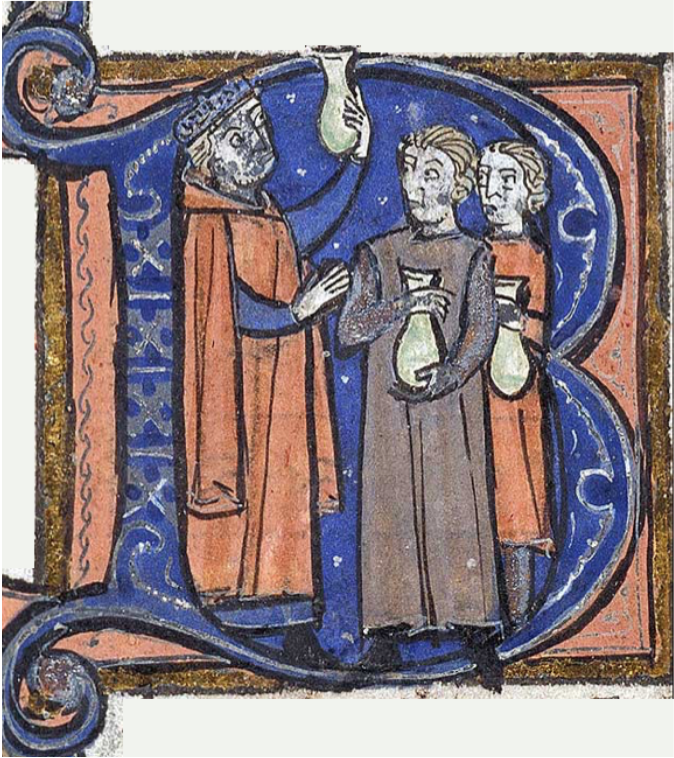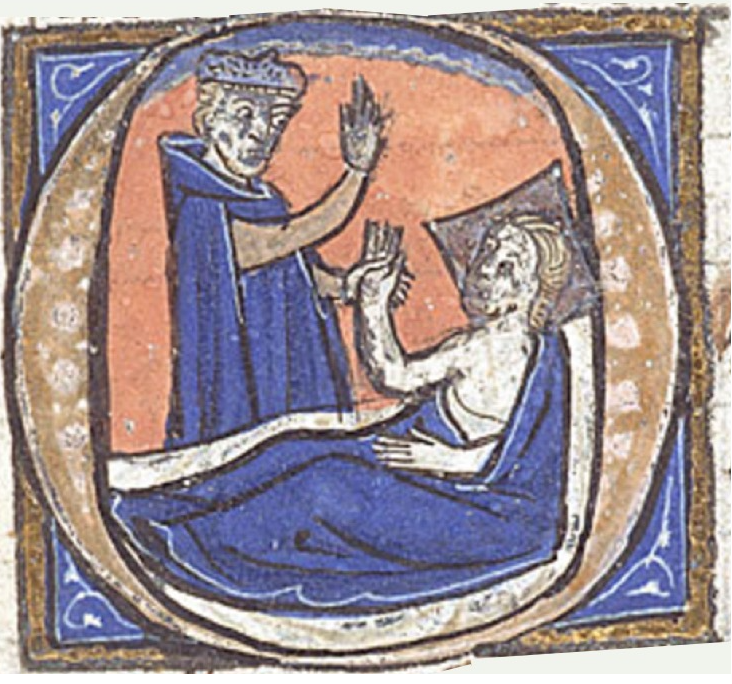Colores Urinarum
What colour is your patient's urine?

Bokynham’s Colores urinarum (Wellcome MS408/3) is a single tract in a collation of medical receipts, recipies, and tracts on uroscopy in both Middle English and Latin from the late fifteenth-century. This kind of text was not uncommon: William Bokynham, a Benedictine monk of Holy Trinity, Norwich (UK), represents a small part of a pre-existing convention; despite being the only surviving witness, this mansucript was not written in his hand. The popularity of these texts highlights the different role that urine played in fifteenth-century life, as opposed to today. Urine could in fact be a useful substance in the premodern period: most importantly here, it was a diagnostic tool and the first port of call for the sick as the clearest way of reading the inside of the body.
The above illumination, taken from Harley 3140 f. 32v (British Library), depicts the popular image of a man holding up a flask of urine (a ‘jordan’) and examining its contents in front of a student. He would be looking for peculiarities in smell, texture, even taste— but the most obvious would be colour. This dictates the format of such uroscopy tracts, typically short texts— generally three or fewer folios long— following a similar, repetitive syntax structure for each entry: ‘Urine as [colour] [optional comparative] [diagnosis]’. Colores urinarum is essentially set out in a user-friendly, quasi-bullet-pointed list, using rubrics to indicate a new entry; one can conclude that this was a working text, then, also emphasised by the frequent abbreviations and mix of Latin medical terms and vernacular, non-specialist references. This suggest to me that the owner was a learning student.
My aim for this edition is therefore build on from this. If one follows the development of uroscopy tracts through to the seventeenth-century, this functional layout advances with the influence of print, where texts adopt an explicit bullet-point style, or an entry-per-page format. My inspiration came from the colour wheel diagrams present in other uroscopy texts, which were used to convey more basic information visually. By adapting the text digitally, I am able to maintain all the original information and detail, while combining this with the visual tool that makes navigation of the text as efficent as possible.

Over time urine-- alongside other excremental matter-- has become the subject of taboo. However, in the premodern era it was highly valued as a diagnostic tool. The colour of your patient's urine would be the first step for examining their hidden internal problems; such tracts as developed here helped to teach the physician to 'read' the vastly differing appearance of the contents of their urine flasks, and to translate it medically.
To use this edition, click on the relevant colour to study its entry. The entry also contains a summary of the corresponding diagnoses.
Follow the manuscript link to compare with the original manuscript.